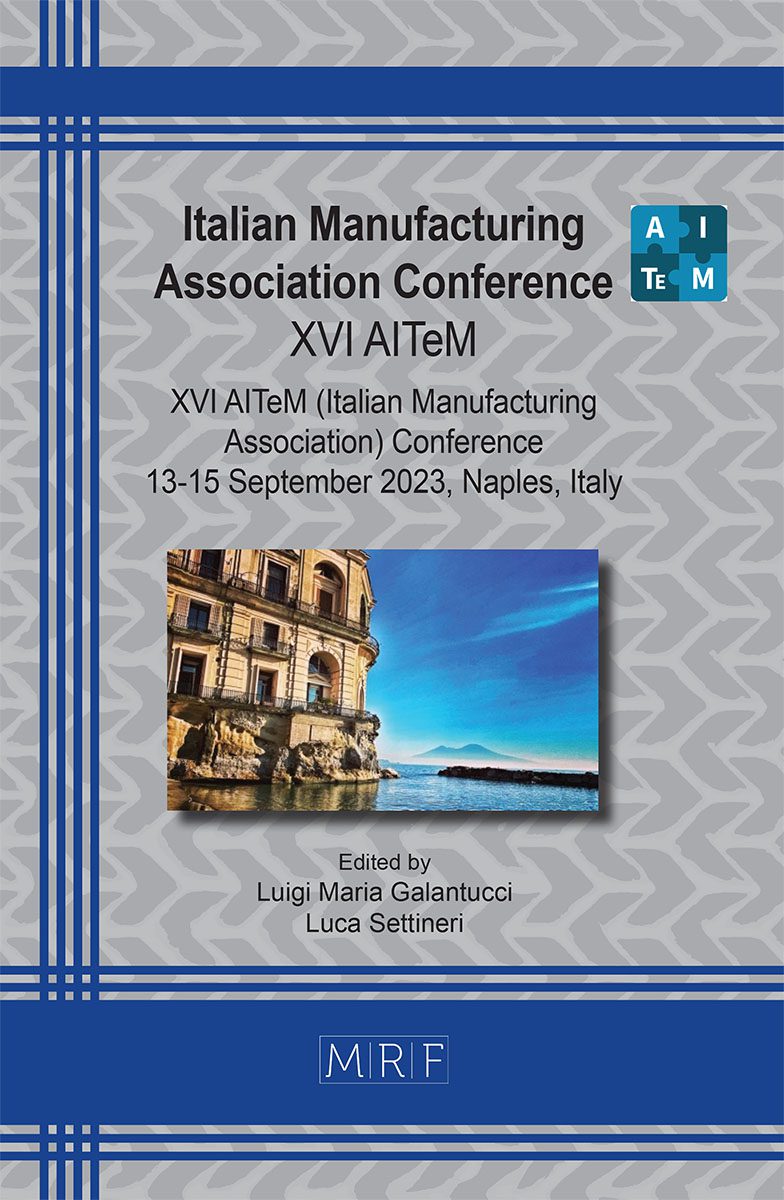A novel quality map for monitoring human well-being and overall defectiveness in product variants manufacturing
Elisa Verna, Stefano Puttero, Gianfranco Genta, Maurizio Galetto
download PDFAbstract. Nowadays, companies are faced with demands for increasingly customised products, shifting from mass production to mass customisation. Thus, operators typically have to produce multiple product variants, often characterised by different complexity levels, while meeting quality standards. Companies, however, cannot only be concerned with production quality, but also with the quality and well-being of workers, as demanded by the human-centred paradigm of Industry 5.0. Therefore, this paper proposes a combined analysis of (i) production quality in terms of overall defects generated during product variants manufacturing and (ii) human well-being in terms of stress response. The combination of the two indicators results in a novel tool called “Quality Map”, which enables the evaluation and monitoring of quality systems during the production of product variants from a broad standpoint. To demonstrate the viability of the method, a collaborative human-robot assembly is used as a case study.
Keywords
Quality, Performance Indicators, Industry 5.0
Published online 9/5/2023, 8 pages
Copyright © 2023 by the author(s)
Published under license by Materials Research Forum LLC., Millersville PA, USA
Citation: Elisa Verna, Stefano Puttero, Gianfranco Genta, Maurizio Galetto, A novel quality map for monitoring human well-being and overall defectiveness in product variants manufacturing, Materials Research Proceedings, Vol. 35, pp 412-419, 2023
DOI: https://doi.org/10.21741/9781644902714-49
The article was published as article 49 of the book Italian Manufacturing Association Conference
![]() Content from this work may be used under the terms of the Creative Commons Attribution 3.0 license. Any further distribution of this work must maintain attribution to the author(s) and the title of the work, journal citation and DOI.
Content from this work may be used under the terms of the Creative Commons Attribution 3.0 license. Any further distribution of this work must maintain attribution to the author(s) and the title of the work, journal citation and DOI.
References
[1] J. Krüger, T.K. Lien, A. Verl, Cooperation of human and machines in assembly lines, CIRP Ann. 58 (2009) 628–646. https://doi.org/10.1016/J.CIRP.2009.09.009
[2] H. ElMaraghy, G. Schuh, W. ElMaraghy, F. Piller, P. Schönsleben, M. Tseng, A. Bernard, Product variety management, Cirp Ann. 62 (2013) 629–652. https://doi.org/10.1016/j.cirp.2013.05.007
[3] E. Coronado, T. Kiyokawa, G.A.G. Ricardez, I.G. Ramirez-Alpizar, G. Venture, N. Yamanobe, Evaluating quality in human-robot interaction: A systematic search and classification of performance and human-centered factors, measures and metrics towards an industry 5.0, J. Manuf. Syst. 63 (2022) 392–410. https://doi.org/10.1016/j.jmsy.2022.04.007
[4] P. Damacharla, A.Y. Javaid, J.J. Gallimore, V.K. Devabhaktuni, Common metrics to benchmark human-machine teams (HMT): A review, IEEE Access. 6 (2018) 38637–38655. https://doi.org/10.1109/ACCESS.2018.2853560
[5] L. Zadeh, From Circuit Theory to System Theory, Proc. IRE. 50 (1962) 856–865. https://doi.org/10.1109/JRPROC.1962.288302.
[6] W. ElMaraghy, H. ElMaraghy, T. Tomiyama, L. Monostori, Complexity in engineering design and manufacturing, CIRP Ann. 61 (2012) 793–814. https://doi.org/10.1016/j.cirp.2012.05.001
[7] E. Verna, G. Genta, M. Galetto, F. Franceschini, Defect prediction for assembled products: a novel model based on the structural complexity paradigm, Int. J. Adv. Manuf. Technol. 120 (2022) 3405–3426. https://doi.org/10.1007/s00170-022-08942-6
[8] K. Sinha, Structural complexity and its implications for design of cyber-physical systems, PhD dissertation, Engineering Systems Division, Massachusetts Institute of Technology, 2014.
[9] B. Alkan, R. Harrison, A virtual engineering based approach to verify structural complexity of component-based automation systems in early design phase, J. Manuf. Syst. 53 (2019) 18–31. https://doi.org/10.1016/j.jmsy.2019.09.001
[10] G. Barbato, E.M. Barini, G. Genta, R. Levi, Features and performance of some outlier detection methods, Http://Dx.Doi.Org/10.1080/02664763.2010.545119. 38 (2011) 2133–2149. https://doi.org/10.1080/02664763.2010.545119
[11] R.H. Myers, D.C. Montgomery, G.G. Vining, T.J. Robinson, Generalized linear models: with applications in engineering and the sciences, John Wiley & Sons, Hoboken, NJ, USA, 2012.
[12] R. Gervasi, K. Aliev, L. Mastrogiacomo, F. Franceschini, User Experience and Physiological Response in Human-Robot Collaboration: A Preliminary Investigation, J. Intell. Robot. Syst. 106 (2022) 36. https://doi.org/10.1007/s10846-022-01744-8
[13] S. Taylor, N. Jaques, W. Chen, S. Fedor, A. Sano, R. Picard, Automatic identification of artifacts in electrodermal activity data, Proc. Annu. Int. Conf. IEEE Eng. Med. Biol. Soc. EMBS. 2015-Novem (2015) 1934–1937. https://doi.org/10.1109/EMBC.2015.7318762
[14] D.C. Montgomery, Introduction to statistical quality control, 8th ed., Wiley Global Education, 2019.
[15] M. Galetto, E. Verna, G. Genta, Accurate estimation of prediction models for operator-induced defects in assembly manufacturing processes, Qual. Eng. 32 (2020) 595–613. https://doi.org/10.1080/08982112.2019.1700274































